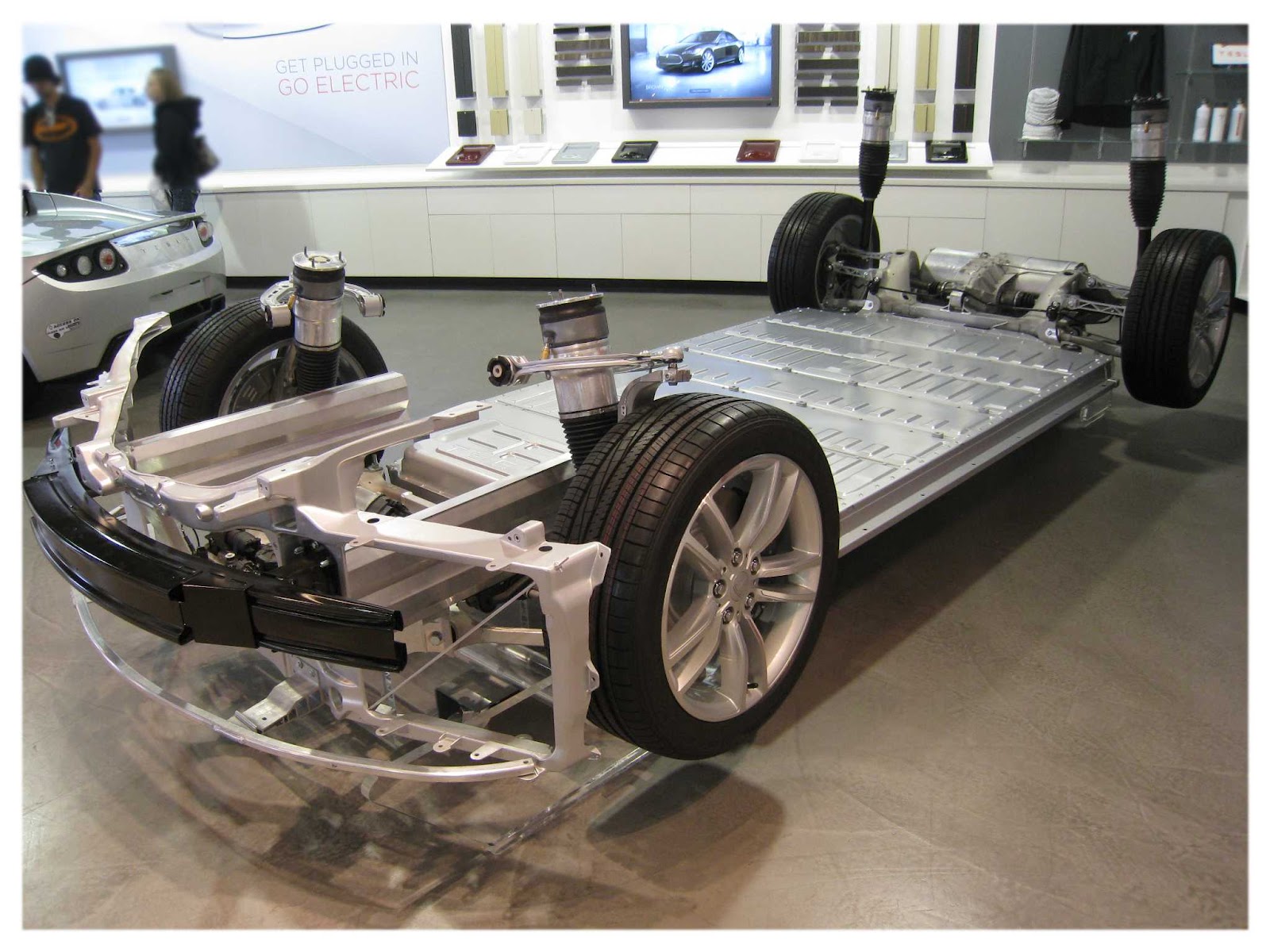*Edit: After reading all of this it seems this is a pointless post but I'd like to see other people's input on this or maybe start a discussion on it*
I am trying to figure out the major restrictions we have on a larger battery pack.
First off I need to say my knowledge on this subject is very limited so you'll have to excuse some of my "DUH" comments.
I wanted to compare the Rav 4 wheel base/track vs the Tesla Model S wheel base/track in order to find the available space for the battery.
I know this won't be a perfect method to find the available space since the tires sizes are difference and I'm sure vertical clearances are not the same but I'm just doing ballpark guesses.
The Rav 4 is 61.4" X 104.7"
The Tesla Model S is 65.4" x 116.5" (using the smaller of the two Track sizes)
Using basic math, that is a difference of 1,190.52 in2, or you can say the Rav 4 has 84% the space for a battery than the Tesla.
How is then that they have more than twice the kWh than us? (85kWh vs. our 41.8kWh)
Well so far I have only talked about length x width. Maybe the Tesla's battery is thicker than ours... but surely not that much thicker to the point of allowing for that much larger a battery.
Maybe Tesla is able to utilize more of the space than us since they built their car from the ground up. They probably designed the car with the space reservation of the battery, whereas Toyota/Tesla had to "fit" the battery around most of the existing components of the Rav 4.
Looking at the two pictures below, this seems to be the case.
So, going forward how would we get a larger battery pack into our Rav 4 EV? I guess without re-routing and changing major components, the easiest way to do this is to have a "thicker" battery which would cut into our ground clearance. Of course this is much easier said than done since we would need someone to design the battery from scratch. Let's face it, that's not going to happen.
In the end, it looks like the answer is, we won't be getting an option of a larger battery pack anytime soon (or probably ever).
It's a shame, it seems if the Rav4 was built from the ground up around the battery size, we could probably get closer to 70 kWh (or more!). Of course that means the Rav 4 EV would've been a 100k + car


I am trying to figure out the major restrictions we have on a larger battery pack.
First off I need to say my knowledge on this subject is very limited so you'll have to excuse some of my "DUH" comments.
I wanted to compare the Rav 4 wheel base/track vs the Tesla Model S wheel base/track in order to find the available space for the battery.
I know this won't be a perfect method to find the available space since the tires sizes are difference and I'm sure vertical clearances are not the same but I'm just doing ballpark guesses.
The Rav 4 is 61.4" X 104.7"
The Tesla Model S is 65.4" x 116.5" (using the smaller of the two Track sizes)
Using basic math, that is a difference of 1,190.52 in2, or you can say the Rav 4 has 84% the space for a battery than the Tesla.
How is then that they have more than twice the kWh than us? (85kWh vs. our 41.8kWh)
Well so far I have only talked about length x width. Maybe the Tesla's battery is thicker than ours... but surely not that much thicker to the point of allowing for that much larger a battery.
Maybe Tesla is able to utilize more of the space than us since they built their car from the ground up. They probably designed the car with the space reservation of the battery, whereas Toyota/Tesla had to "fit" the battery around most of the existing components of the Rav 4.
Looking at the two pictures below, this seems to be the case.
So, going forward how would we get a larger battery pack into our Rav 4 EV? I guess without re-routing and changing major components, the easiest way to do this is to have a "thicker" battery which would cut into our ground clearance. Of course this is much easier said than done since we would need someone to design the battery from scratch. Let's face it, that's not going to happen.
In the end, it looks like the answer is, we won't be getting an option of a larger battery pack anytime soon (or probably ever).
It's a shame, it seems if the Rav4 was built from the ground up around the battery size, we could probably get closer to 70 kWh (or more!). Of course that means the Rav 4 EV would've been a 100k + car


